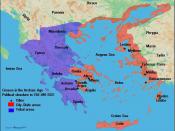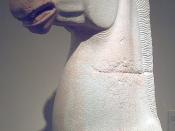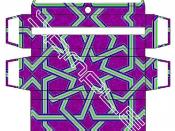The Geometric period is the first period in Ancient Greek Art and Sculpture, which began in the ninth century and ended in the seventh century B.C.. In this period sculptures were constructed in a much smaller, cruder form then the well-known sculptures of the other Greek periods. An example of a statue created in the Geometric period is Hero and centaur (Herakles and Nessos?), which is dated between 750-730 B.C.. The sculptures most likely represent the hero Herakles and the centaur Nessos, which are both part of Greek mythology, which is a common motif is Greek sculpture. A motif is a repeated them, design, or pattern used consistently in different works of period. In the Geometric period we also see the beginning of artists focusing on reproducing details of the human anatomy. In the sculpture of the Hero and the centaur this is seen through the artists creation of eye sockets on the statue of the hero.
The anatomical correctness that begins in this era is evolved and carried through all periods of Greek sculpture, but it is important to note that this special attention to detail of the human specimen began in the Geometric age.
The Archaic period is the next period in Ancient Greek art, which took place around the sixth century B.C. This period of art differed from the Geometric period in many ways, for example, the size of the sculptures grew exponentially. The Archaic period also portrayed humans not only anatomically correct, but with perfect bodies modeled much like the Ancient Egyptians canonical form of sculpture. A canon is an ideal system of proportions of depicting humans, buildings, and other forms of art. Sculpture in the Archaic period was also very rigid, but unlike the Egyptians, movement was depicted. This can be seen in the sculpture...


